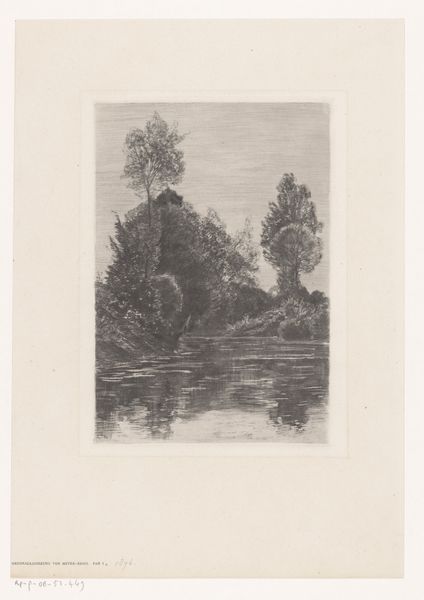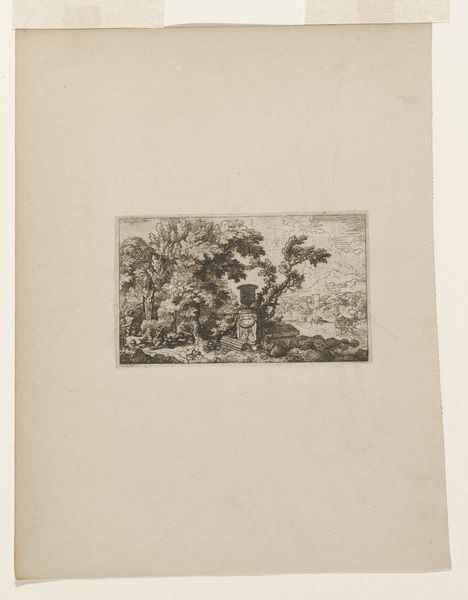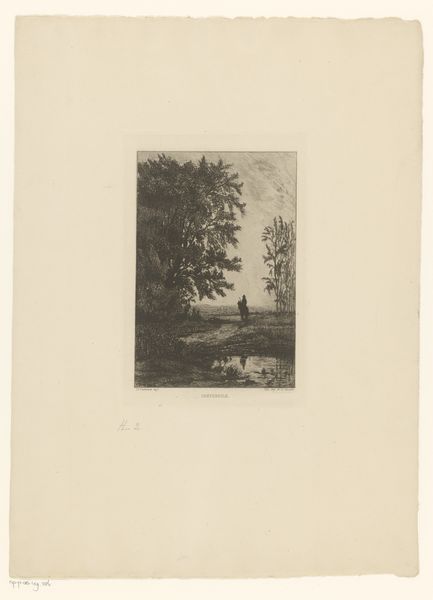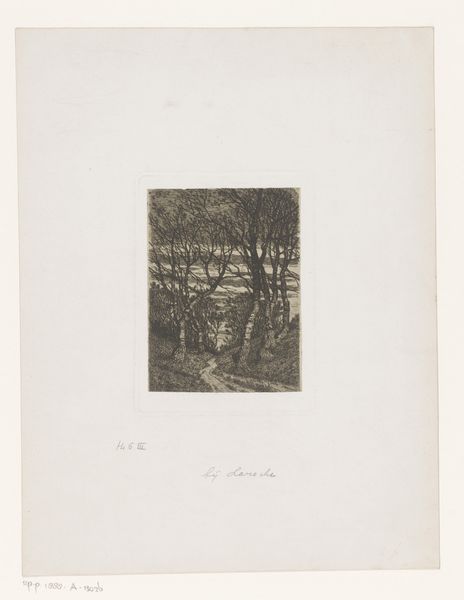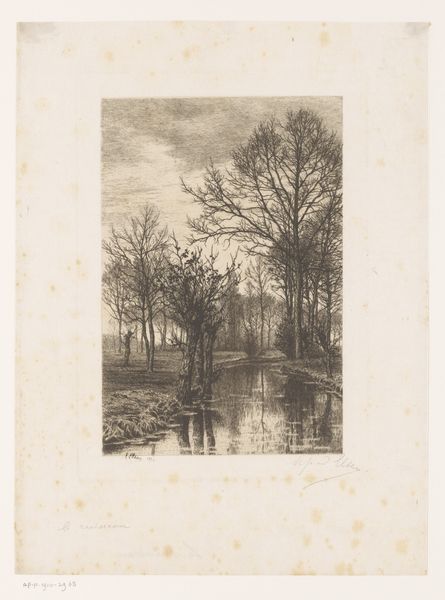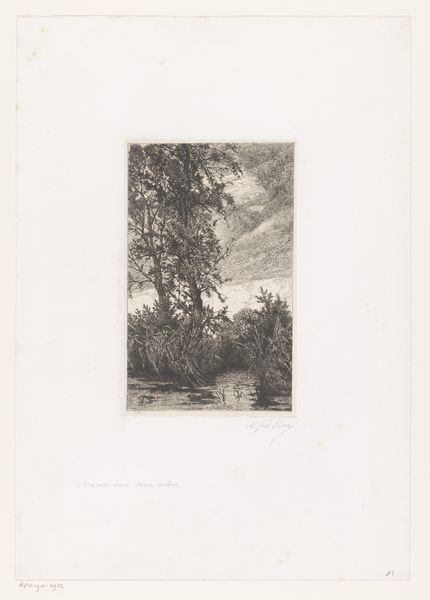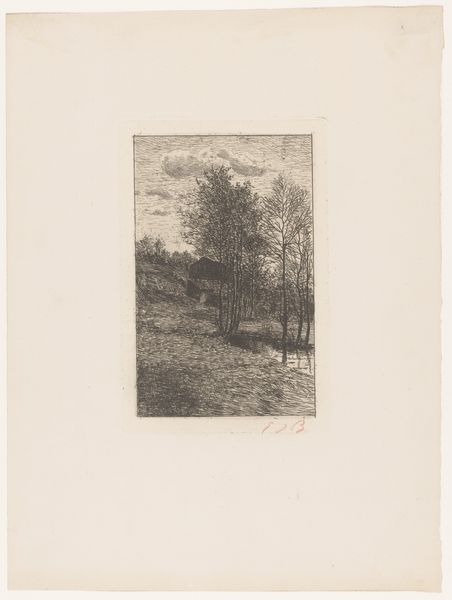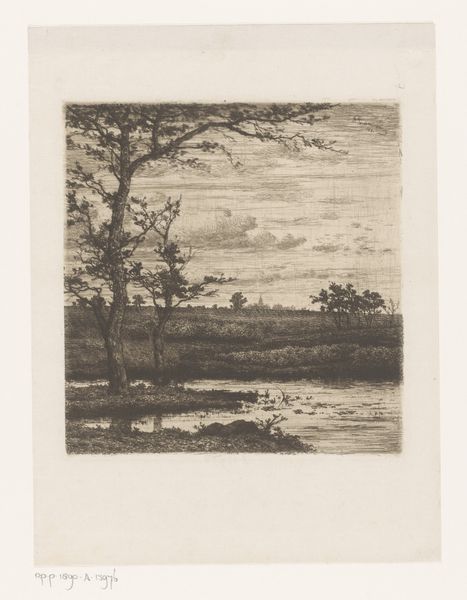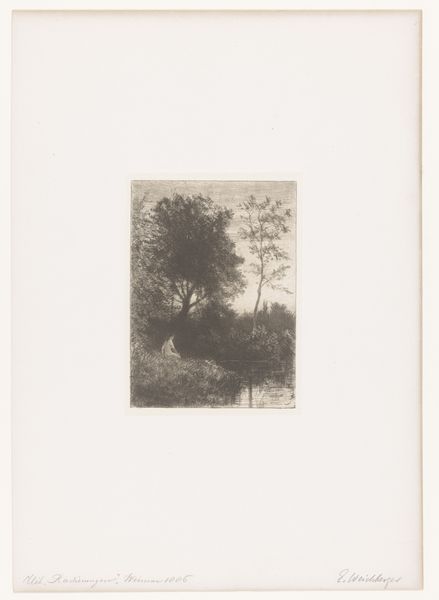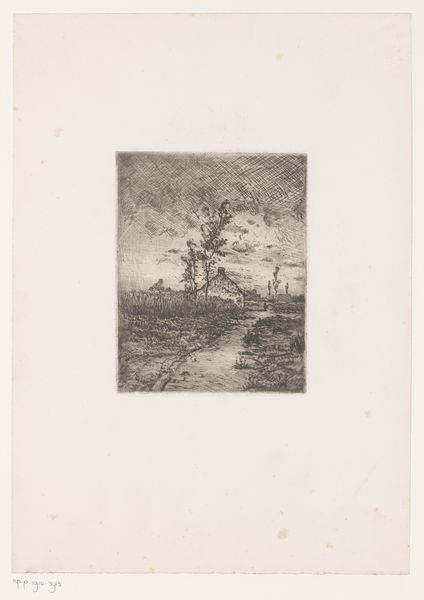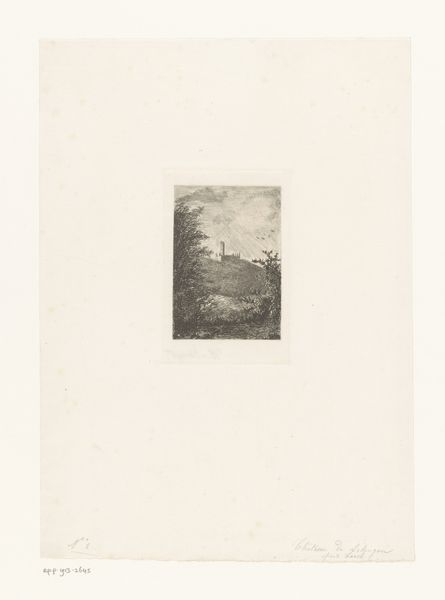
print, etching, paper
#
lake
# print
#
impressionism
#
etching
#
landscape
#
paper
#
line
#
realism
#
monochrome
Dimensions: height 120 mm, width 82 mm
Copyright: Rijks Museum: Open Domain
Curator: What we have here is Jean Pierre François Lamorinière's "Row of Poplars on the Shore of a Lake." It's an etching, dating from somewhere between 1838 and 1889. Editor: The immediate impression? Quiet. There’s a stillness in the water, in those trees. It almost feels… melancholic? Curator: The stillness you perceive is created by the linear quality of the etching itself. Notice how the repeated, precise lines used to create the trees almost mimic the uniform trunks themselves. It feels very considered. Editor: True. And it makes you wonder, doesn’t it, about the availability of printmaking materials at the time? An etching meant a copper plate, the acid… it’s a far cry from quickly snapping a photo. There's inherent labor involved, even a democratic dispersal of the artwork possible because of prints. Curator: Absolutely. The act of creating, that dedicated labour, adds another layer to the stillness. This isn't just a landscape; it's a captured moment prolonged through the artist's focus. The scene becomes a repository of the artist’s—and perhaps our own—meditations on nature. I like the effect of how the row of the slender poplars and the reflections become one in the center; is it the reality or just the reflection we perceive as truer in our minds? Editor: The monochrome helps, definitely creating more somber reflections of nature. But that linear repetition… does it add or detract from that original sense of stillness we first noted? It’s nature filtered, carefully arranged. Does it represent, in your opinion, access to nature limited to the privileged who acquired these prints to admire? Or, since there would be multiple copies due to the production method, a wide reach? Curator: It does both. Yes, prints were often acquired as status symbols of cultural awareness, demonstrating aesthetic interests to society; on the other hand, more prints existed overall for the art to travel from person to person. A single owner doesn’t exist for a copy of prints. Editor: Indeed. Seeing this piece from the Rijksmuseum collection—reflecting on the resources needed for its production—makes one consider not only art history, but also the history of labour and access embedded within this quiet landscape. Curator: Exactly! This landscape makes you consider, makes you imagine a conversation with its maker and what matters and moved the artist while carefully laboring and arranging.
Comments
No comments
Be the first to comment and join the conversation on the ultimate creative platform.
